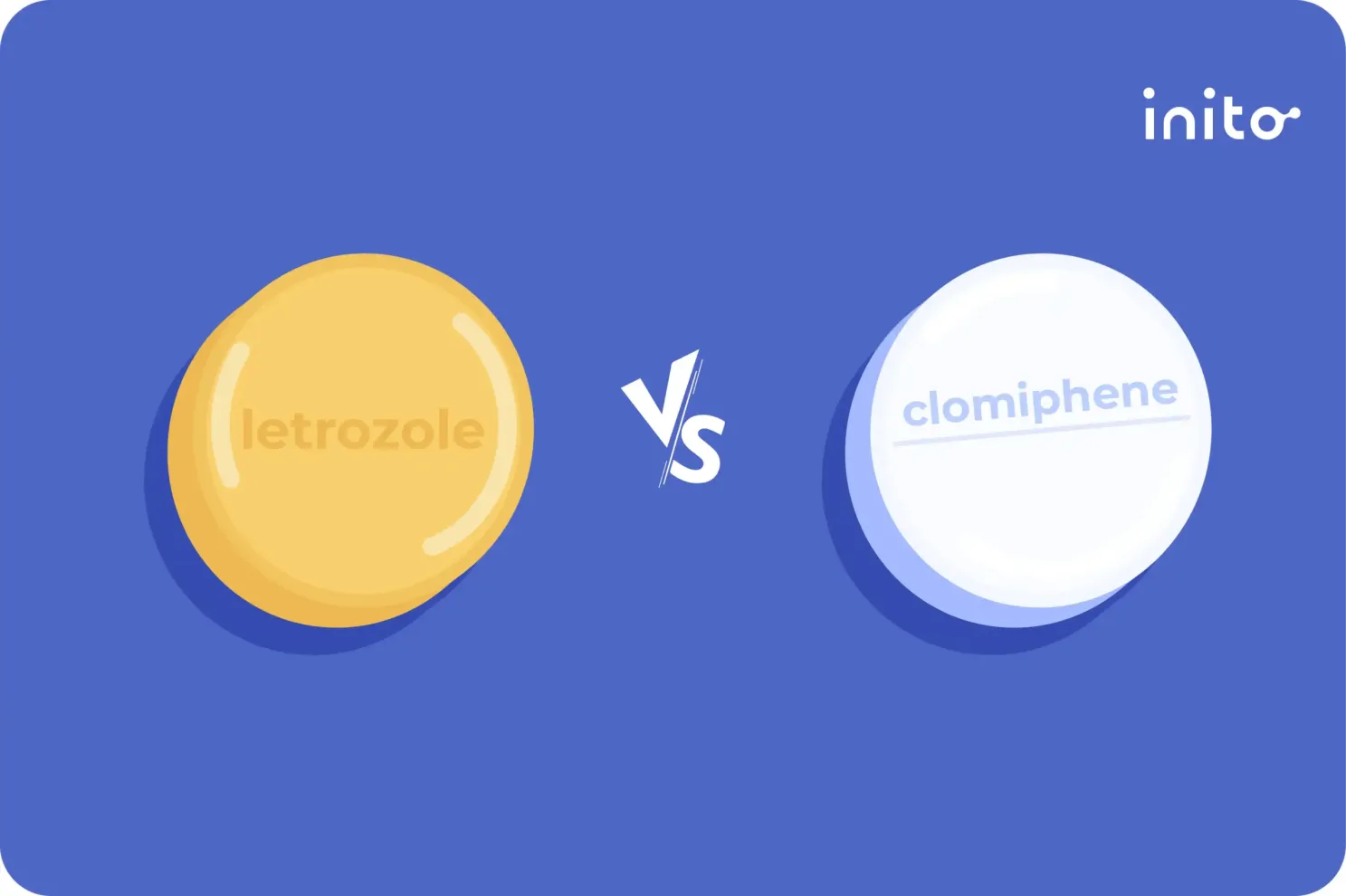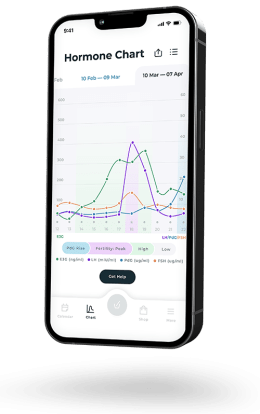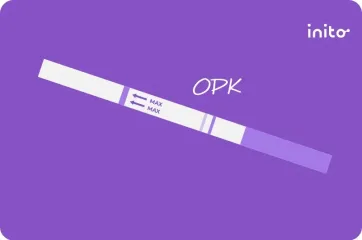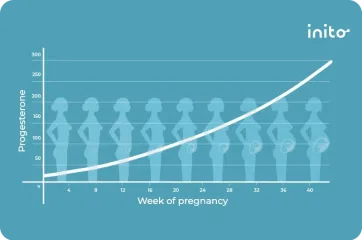Content table
Considering Clomid® vs. letrozole as part of your fertility plan? Unsure which drug, if either, is the right one for your situation?
There’s much debate over these two fertility drugs. But you’re in the right place to get some answers! Let’s get to it.
For those with PCOS, Clomid® is traditionally used first. That doesn’t mean it’s the best fertility drug to use in all cases though.
For unexplained infertility, these two drugs have similar effects. And studies suggest that in some cases, letrozole may have better outcomes. For instance, decreased chance of a multiple pregnancy and increased live birth rates.
While both have been used to help achieve pregnancy, your treatment plan will depend on a lot of factors. These include your age, the reason for infertility, and other health conditions. So consulting your Healthcare Provider (HCP) or fertility specialist is a must.
But before you make any decisions, let’s make sure you understand two major things.
1. How they both function in the body and?
2. Which one may be more appropriate based on particular circumstances?
Keep reading for a handy comparison of Clomid® vs. letrozole.
Disclaimer to avoid confusion: Clomid® and Femara® are the brand names of these fertility medications. Clomiphene citrate and letrozole are the respective drug names, respectively. These names are used interchangeably in this blog.
Takeaways
- Clomid® and letrozole are both fertility drugs that can aid some women in TTC. Neither drug is better than the other.
- Clomid® (clomiphene citrate) has been the go-to drug for treating anovulation for women with PCOS.
- For unexplained infertility, clomiphene and letrozole have similar effects.
- Some studies have shown that letrozole may have better outcomes. These include: 1) lower rate of multiple pregnancies, 2) decreased risk of complications, and 3) increased live birth rate.
- Many factors determine how well clomiphene or letrozole works for you. Your fertility status, age, and overall health all play a role.
- You should have fertility testing done before you begin using Clomid® or letrozole. This will help determine the best course of action to take.
- Talk to your doctor about any concerns you have about inducing ovulation.
What Is Clomiphene and How Does It Work?
Let’s take a look at Clomid®, aka clomiphene citrate, first.
Clomid® is an oral medication frequently prescribed to help treat women with infertility. The main purpose is to induce ovulation. Think of Clomid® as the player who assists the winning goal. It sets up the handoff of a mature egg so it can meet up with sperm for fertilization.
Here’s how it works. This drug is classified as a Selective Estrogen Receptor Modulator (SERM). This is a fancy name that means it binds and blocks your estrogen receptors so that estrogen can’t bind to them. Basically, it tricks your brain into believing your estrogen levels are low.
In response, this triggers your body to produce more FSH (Follicle Stimulating Hormone). Increased FSH causes your ovarian follicles (which house your eggs) to grow. In order for an egg to be triggered for release, it needs to grow to a particular size.
In a normal cycle, usually just one follicle will mature each month. This is the follicle that releases the egg. But when you take clomiphene, multiple follicles can end up maturing. The hope here is that at least one of these follicles will release an egg.
That’s the gist of how it works, but let’s see why you might use it as part of your treatment plan.
When Is Clomid® Used to Help With Fertility?
Clomid® is mainly used to treat infertility when a woman has an ovulation-related condition. These include:
- Chronic anovulation – a condition marked by steady months without ovulating
- Polycystic Ovary Syndrome (PCOS)
- Some instances of unexplained infertility
Why is Clomid® helpful in these cases? Because of its ability to boost follicle maturity which can consequently trigger ovulation.
Here’s the catch though.
Clomid® can only work when your brain is able to release FSH after hormonal stimulation. But what if you experience fertility challenges that don’t involve ovulation? Or what if your hypothalamic-pituitary-ovarian axis isn’t functioning properly? Then Clomid® won’t be of use to you.
One non-ovulatory condition that won’t benefit from Clomid® usage is hypogonadotropic hypogonadism. This is when the ovaries produce next to no sex hormones. Usually, this is due to issues with the hypothalamus or pituitary gland.
A few other infertility factors unrelated to ovulation are uterine abnormalities, pelvic lesions, and blocked fallopian tubes. Again, these would not benefit from Clomid® usage. So what should you do if you’re struggling with one of these conditions? Talk to your doctor about other available treatment options.
What Is Letrozole and How Does It Work?
Now let’s examine letrozole (Femara®) more closely.
Like clomiphene, it’s an oral medication. Letrozole is classified as an aromatase inhibitor. This means it blocks the enzyme aromatase, which converts androgens to estrogen. Initially, it was formulated as a way to combat certain types of breast cancer. But over time, it was also found to help induce ovulation.
Here’s how it works. After taking letrozole, your estrogen levels decrease. When your brain perceives lower amounts of estrogen, FSH production increases. The higher levels of FSH boost follicle growth. This is helpful when TTC because this increases your chances of releasing a mature egg.
So yes, you are right in noticing that letrozole produces a similar outcome to clomiphene – an increased chance of ovulation. But the way it creates that outcome is slightly different.
So why would someone be prescribed letrozole as opposed to clomiphene? Find out in the next section.
When Is Letrozole Used as a Fertility Treatment?
Traditionally, Clomid® is considered a fertility intervention first, mainly because it’s been around in the fertility world longer. (Remember, letrozole began as a drug for breast cancer patients.)
However, letrozole has gained popularity as a fertility treatment. This is because it has a similar influence on the body by stimulating FSH production.
Most commonly, it’s prescribed for women who have PCOS or unexplained infertility. It also tends to be considered for women who don’t respond well to Clomid® or who struggle with Clomid®’s side effects. (More on that in a later section).
Traditionally, Clomid® is considered as a fertility intervention first. Mainly because it’s been around in the fertility world longer. (Remember, letrozole began as a drug for breast cancer patients.)
But letrozole has gained popularity as a fertility treatment. This is because it has a similar influence in the body by stimulating FSH production.
Most commonly, it’s prescribed for women who have PCOS or unexplained infertility. It also tends to be considered for women who don’t respond well to Clomid® or who struggle with Clomid®’s side effects. (More on that in a later section).
Clomid® vs. Letrozole: Which Is Better for Infertility?
Outcome | Clomiphene citrate | Letrozole |
Success rate | Effective for PCOS and unexplained infertility. Usually considered first since it’s been around longer. | Effective for PCOS and unexplained infertility. Gaining more popularity recently. Some studies show it has better outcomes for live birth and ovulation rates. |
Side effects | Increased side effects compared to letrozole. | Fewer side effects. |
Twins/multiples rate | Increased chances of twins and multiples (due to higher risk of multiple follicles releasing an egg). | Less common when used as the only ovulation induction drug. |
Cost | Depends on insurance coverage, fertility plan, and pharmacy. Cheaper than IVF and gonadotropins. | Depends on insurance coverage, fertility plan, and pharmacy. Cheaper than IVF and gonadotropins. |
Dosing | Starting at 50mg daily and up to 250mg daily. | Starting at 2.5mg daily. |
You must be itching to know the answer to this question at this point! But here’s the thing. Both of these drugs have their place in helping achieve pregnancy.
So let’s take a look at several angles that should be considered. Then you’ll be better able to determine which of these two drugs to use along your fertility journey.
Success Rate
The success rate of both drugs is dependent upon their reason for usage. So here we’ll break it down into two categories:
1. Women being treated for PCOS versus
2. Women with unexplained infertility.
Usage 1: Infertility with PCOS
For most people with PCOS, the reason for their infertility stems from anovulation. That’s why inducing ovulation is considered a first-line fertility treatment.
Clomid® is still considered for many women with PCOS. But based on the latest research, letrozole is gaining a lot of popularity for PCOS too.
One study examined several studies involving nearly 4,000 PCOS-inflicted women. And what did they discover? Compared to clomiphene, the letrozole group had increased rates of ovulation, pregnancy, and live births.
Another study of 750 women with PCOS reached similar conclusions. Again, the letrozole group showed superior improvement in live births and ovulation rates.
Interestingly, the researchers also found that the BMI (Body Mass Index) of the participants played a role here. Letrozole’s success rate was double that of Clomid® for women with a BMI greater than 30.
Usage 2: Unexplained infertility
Unable to get pregnant but have no known fertility issues? We call this unexplained infertility. And Ovulation induction is often a treatment method considered for this diagnosis.
When using clomiphene or letrozole for this purpose, there seems to be no significant difference in outcomes for most cases.
One study followed 900 women undergoing ovulation induction via Clomid® and letrozole. The results showed that the rate of clinical pregnancies was similar for both drugs.
A separate study of 172 infertile women had similar findings. In this study, the drugs were letrozole vs. clomiphene citrate paired with estradiol. Again, the pregnancy rates were comparable for both test groups.
The outcomes were slightly altered when additional fertility interventions were added on. For instance, a study examined 214 women undergoing IUI (intrauterine insemination) in addition to superovulation. It was found that taking letrozole (CD 1 – CD 9) yielded better results than taking clomiphene citrate.
Clomid® vs. letrozole side effects
In general, clomiphene is known to cause more side effects than letrozole. But as with any drug, the precise effects will vary from person to person.
Here’s a breakdown of what you may experience when taking either drug:
Clomiphene | Letrozole |
|
|
You’ll notice that Clomid® comes with a larger slew of side effects. This is because it binds and blocks the actual estrogen receptors themselves. That blockage produces a more pronounced anti-estrogen effect on the brain.
Here’s some more food for thought with these symptoms to give you the complete picture.
Difficulty in implantation
Taking Clomid results in a decreased endometrial thickness, which makes implantation difficult. It also leads to thicker cervical mucus, creating additional challenges. This thickness makes it harder for sperm to penetrate and fertilize the egg. Lastly, letrozole doesn’t stay in your body for as long as Clomid®.
Rate of twins or multiples
You have a higher chance of conceiving multiples while on Clomid®.
One possible explanation for this is that letrozole doesn’t stay in the body as long as Clomid®. Letrozole’s half-life is 48 hours, while Clomid®’s half-life is 2 weeks.
Here’s how this plays out during a letrozole cycle:
- The dominant growing follicle will secrete increased amounts of estrogen.
- As these estrogen levels increase, the letrozole loses its aromatase-inhibiting effect.
- FSH production is no longer triggered.
- The smaller, less mature follicles will stop growing. This means there’s a much lower chance of releasing more than one egg.
But things pan out differently in a Clomid® cycle.
While on Clomid®, the rising estrogen levels don’t suppress FSH production. This is because the estrogen receptors continue to stay blocked. (Remember, Clomid® has a prolonged half-life.)
So because your FSH levels remain high during a Clomid® cycle, there’s a greater chance of multiple follicles maturing and releasing an egg. Hence, there is an increased possibility of conceiving more than one baby.
Cost
Compared to IVF and gonadotropins (fertility medications that consist of FSH, LH, or a combination of the two), clomiphene citrate and letrozole are both cheaper. That said, it’s hard to compare the exact price of these two fertility drugs. The amount you pay for either will depend on several factors. A few include your insurance coverage, pharmacy, and your fertility plan.
Contact your insurance provider and any healthcare specialists you’re seeing. They can give you a better idea of the cost before starting treatment.
Dosing
If you end up taking clomiphene, you will likely begin anywhere between CD (cycle day) 2 and CD 5 and continue for 5 days. (CD 1 of your cycle is the day you start bleeding.) This drug is commonly prescribed at 50 mg to start but could go all the way up to 250 mg per day.
For letrozole, you’ll likely start taking the tablets on cycle day 2 or 3 and continue for 5 days (just like with clomiphene). Dosing for letrozole usually starts at 2.5 mg. But for both drugs, dosing will vary based on your unique treatment plan. Check with your fertility clinic or HCP for more guidance on your dosing regimen.
So, is one better than the other?
No, neither drug should be considered “better” than the other. Both have their advantages and shortcomings when TTC.
And keep in mind that these drugs are only one aspect of a larger fertility treatment plan. Yes, they can be used to help stimulate FSH. But there’s no true way to control the amount of FSH that your body releases to stimulate follicle growth.
Also, be aware that so many factors affect your ability to ovulate and conceive. Your fertility status, age, health, and other medications are some of the major ones.
It’s possible you’ll need to trial and error the exact dosing for a menstrual cycle or two to see what works best for you. Consider this. For one woman, maybe 50 mg is enough to stimulate ovulation. But another woman may not find success with the drug even at the 250 mg dosage. You can’t know this though until you give it a try.
Again, it all really depends on your particular circumstances. That’s why you should have a complete fertility workup done. The test results can give answers about the reason for infertility. And this will help determine a fitting treatment plan.
Joining Forces: Combined Clomid® + Letrozole Therapy
In some cases, a doctor may recommend trying letrozole and Clomid® together in a menstrual cycle.
One study closely examined women with polycystic ovary syndrome and infertility. Their findings? Using a combined Clomid® and letrozole therapy led to better outcomes than using the drugs in isolation.
Another study following women with infertility and polycystic ovary syndrome had similar findings. In this sample, the patients using the combined therapy had higher ovulation rates than those who only took letrozole.
These studies are smaller and focused on women with PCOS. But they do provide some hope for enhanced treatment options for the future.
Taking Clomiphene or Letrozole While Using the Inito Monitor
Using the Inito fertility monitor? Unsure about how these medications will affect your results? Here’s what you need to know.
The results you see on your fertility monitor are the exact values of the four sex hormones found in your urine. But there’s no way to know to what extent your dosage of clomiphene and or letrozole altered those levels.
Your best bet is to stick to your testing and menstrual cycle tracking while taking the medication. And contact your fertility clinic if you have any questions or concerns about your results.
A final word of caution! The medications discussed in this article should only be taken under the supervision of a medical expert. The purpose of this article is only to inform you about their usage. It should not be construed as a suggestion or medical advice to take these drugs. Contact your healthcare provider for further guidance.

FAQs
Clomid® actually remains in your system much longer than letrozole. Because of the way it binds to estrogen receptors, it also comes with more potential side effects than letrozole.
Both letrozole and clomiphene have proven to be helpful in improving fertility outcomes for women with polycystic ovary syndrome. There is slightly more research indicating that letrozole could be the front-runner for this condition. But overall, it really just depends on your unique circumstances. To determine which one is right for you, consult your healthcare provider.
Neither drug directly causes twins. However, they can lead to an increased incidence of conceiving twins. This is especially true in the case of clomiphene citrate. Because of the way the drug works in your body, there is an increased likelihood of ovulating more than one egg. When more than one egg is fertilized, that’s one way you can end up with twins or multiples.
The number of tests depends on the irregularity and length of your cycles. For someone with an average cycle length of 30 days, 12-15 tests may be required to track and confirm ovulation.
Was this article helpful?
- Evaluation of Amenorrhea, Anovulation, and Abnormal Bleeding – National Library Of Medicine
- Clomiphene – StatPearls – NCBI Bookshelf
- Letrozole – an overview | ScienceDirect Topics
- Letrozole Compared With Clomiphene Citrate for Polycystic Ovarian Syndrome: A Systematic Review and Meta-analysis
- Letrozole versus Clomiphene for Infertility in the Polycystic Ovary Syndrome | NEJM
- Letrozole, Gonadotropin, or Clomiphene for Unexplained Infertility | NEJM
- Use of letrozole versus clomiphene-estradiol for treating infertile women with unexplained infertility not responding well to clomiphene alone, comparative study – ScienceDirect
- Extended letrozole regimen versus clomiphene citrate for superovulation in patients with unexplained infertility undergoing intrauterine insemination: A randomized controlled trial | Reproductive Biology and Endocrinology
- Letrozole versus Clomiphene for Infertility in the Polycystic Ovary Syndrome – PMC
- Clomiphene Citrate versus letrozole for Ovulation Induction in PCOS: A Comparative Study
- Letrozole: ovulation or superovulation? – Fertility and Sterility
- Lower multiple pregnancy rates with letrozole versus clomiphene in 16,001 IUI cycles over 10 years – Fertility and Sterility
- Cureus | Assessment of Fertility Outcomes Following Combined Clomiphene and letrozole Versus letrozole Therapy for the Treatment of Polycystic Ovarian Syndrome Subfertility
- A randomized controlled trial of combination letrozole and clomiphene citrate or letrozole alone for ovulation induction in women with polycystic ovary syndrome – Fertility and Sterility
- Ovulation Induction Techniques – StatPearls – NCBI Bookshelf

















